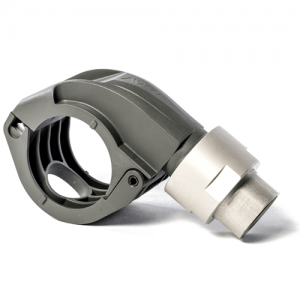Pipe installation can be a time consuming and, often times, a tedious process. When you go to install pipes in a compressed air system, it is important to have the right tools and equipment to get the job done efficiently. This is no different when it comes to choosing which pipe fittings to use for the installation process.
Traditional fittings use a series of elbows and an equal tee to connect pipes within your system. The equivalent connection can be created with modern quick drop fittings. A quick drop fitting will attach around the outside of a line of pipe and seal it off with an o-ring. We will explore the difference between these two types of fittings to help you better determine which is the best to use in your compressed air system project.
The Ease of Installation with Pipe Fittings
Perhaps the biggest advantage of using quick drop fittings is the ease of installation. The traditional setup requires extensive pre-planning before going through with the installation process. One mistake, and the choice to use traditional fittings can have you starting over from scratch. Oppositely, you can attach quick drop fittings around the pipe and begin working to drill and install your connecting pipe.
With traditional fittings, you will need to thread or solder pipe within your compressed air system. This will require more time involvement, can create more downtime, and will require workers to carry more equipment around for installation. In addition, specialized tools will likely be required when using the traditional installation process.
Quick drop fittings can help lessen the burden of pipe installation. No special tools are required for this process as installers can easily drill a hole on the side or top of your pipe without a crimp tool, removal tool, soldering tool, etc. After that, you should be able to easily connect the new line of pipe to your system.
Versatility of Quick Drop Fittings
Quick drop fittings also allow for easy installation after your compressed air system is 
Some of your pipes may be located in hard to reach places and the last thing you want to do is cut apart pipes in these locations. With traditional fittings, you would have to go through this tedious extra process. Quick drop fittings, however, excel in confined areas since they can be connected anywhere along a line of pipe.
Flexibility and versatility are proven advantages of using quick drops in your system.
Control the Condensation in Your System
With traditional fittings, condensation can easily form in the header pipe if your pipe 
The alternative solution is quick drop fittings, which create a drop from the header pipe. This allows the condensation to remain in the bottom half of the pipe to be drained off later. Your tools and equipment will remain unscathed from the condensation built up in your compressed air pipe system. This will allow you to instantly proceed with the process of installing this connection and have you on your way to installing the next connection in no time.
Cost Vs. Efficiency
The initial cost of quick drop fittings does tend to be higher than the combined cost of traditional connectors. However, this cost is counteracted with the time and expenses saved during the installation process.
In any business, time is money. Anyone installing piping in your system is receiving a paycheck, whether you are taking on the challenge yourself or hiring someone else. The faster you can install pipes into a system, the more efficient and profitable your business can be.
This makes the initial expense of buying quick drop fittings well worth the return on investment in comparison to traditional fittings.

